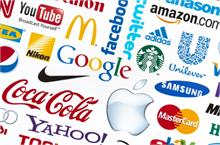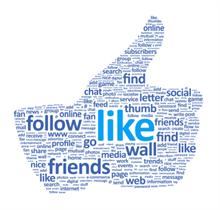
Building awareness and getting the sort of engagement in a change programme that results in high levels of individual adoption of the change can be challenging. Most organisations have a myriad of messages being communicated through a variety of channels each and every day. This corporate chatter can cause the audience to tune out, especially if all messages are delivered via set templates and in predictable formats.
Creating an internal brand enables you to cut through the corporate noise and help staff see and hear your change message. Presenting a visual identity for the change makes it easier for staff to connect and relate to it.
Marketing and Communications managers usually have fixed views on how the organisation should communicate internally. Often, this relates to the strict use of corporate templates that incorporate the company logo, correct typeface, colours, imagery and even language. The premise is that the brand – what we stand for and who we are – is experienced the same way for both external and internal audiences. Therefore, communications should be executed in the same manner. External marketing, to your clients and the markets in which you operate, is best governed by a well thought out brand strategy and set of brand guidelines. However, the tone of voice for internal communications often needs to be different from the external brand – preaching to the converted rarely inspires behavioural change.
Case Studies
On two recent engagements, we have used internal branding to help successfully communicate change.
Example 1: Using a character and tagline to establish a project identity
The first was an EDRMS (Electronic Document and Records Management System) rollout that required 4,000 people in a utility company to better use their records management system. The project manager had already sensed the need for communications that captured people’s attention and emphasized the importance of the project, and was receptive to creating a project identity that staff could recognise and relate to. Records management, compliance and filing structures are not the most exciting topics, even when the risks of non-compliant records management are high.
A name, tagline and logo were designed to create a character called ‘REX’ to identify the project. The ‘REX’ name was short and catchy, and the tagline related to records management and the chosen software. The logo was consistently applied to user guides, posters, videos, intranet banners, training materials, e-Learning and giveaways used as rewards during training. The logo gave the project high visual recognition and – eventually – an engaging brand personality. Employee surveys completed as the project was implemented over two years confirmed the high awareness of the project and the high engagement in the brand and the positive values attributed to the brand.
The ‘REX’ training programme was positive for users of the EDRMS and reinforced the project as fun, worthwhile and easy to get involved with. Having a clear and relatable internal brand for the project helped increase EDRMS user adoption. Ongoing training and engagement after project completion remains high and it has been decided to retain the REX brand as an identifier for the EDRMS system and records management principles and processes.
Example 2: Linking an internal project brand to the corporate brand
The second example of using internal branding to communicate change involved a personal leadership program Change Factory developed for a Pacific Island petroleum company. The program was called iLead® and set out to align personal, individual goals with community and company goals. A logo was developed to provide identity for the program of individual change. Limited colours were chosen to provide a visual link with the company logo and ensure communications were easily recognised.
The internal branding was not just about the logo and visual elements. The language used in iLead communications and training material was positive, simple and reinforced the messages of positive consequences of personal change. Communicating to staff what we did not want them to do was less effective in this instance. Personal posters identifying interests, goals and actions were created for every person in the organisation to take home, as well as for the workplace. This enabled staff to share aspirations and gave a clear sense of individual ownership to the brand – iLead became personal. This in turn created belief, which motivated changes in behaviour. This level of engagement could not have been achieved if the communications were done on company letterhead or through use of a corporate Powerpoint template.
Matching the communication components to the change message
Understanding the communication channels is important when creating an internal brand. A logo design may need to work across a variety of applications such as t-shirts, website, posters or videos. A one or two colour version of the logo may also be required. Typography needs to be legible at small sizes and colours should be consistent across print and digital mediums.
Choice and application of imagery needs to reinforce the change message and visual tone of the internal brand. If it is revolutionary change, use bold images. When using stock photo images, keep the imagery real, relatable, and avoid clichés and clip art. Be prepared to invest in good quality imagery to support your message.
Seven tips for using branding for internal change
In summary, here are seven tips to help communicate change using internal branding.
- Ensure the project/program manager and sponsor understand the importance of a communication strategy to the success of the change.
- Create a simple project name that staff understand and relate to.
- Design a logo that creates visual cut through.
- Use a limited colour palette to support the logo.
- Choose images that visually support the change messages.
- Use positive language that addresses ‘What’s in it for me?’
- Design the logo to work across all communication channels.
Brand consultant Marty Neumeier wrote ‘A brand is a person’s gut feeling about a product, service or organization.’ The same can be said for internal brands, which are most effective when the visual and verbal tone of the communications align with the change. If it feels real to your audience, you will achieve the necessary cut through and ultimately the communication goals of the project.








